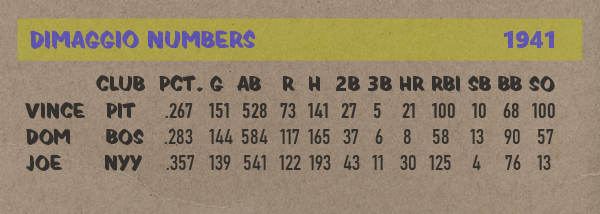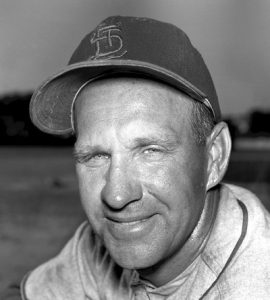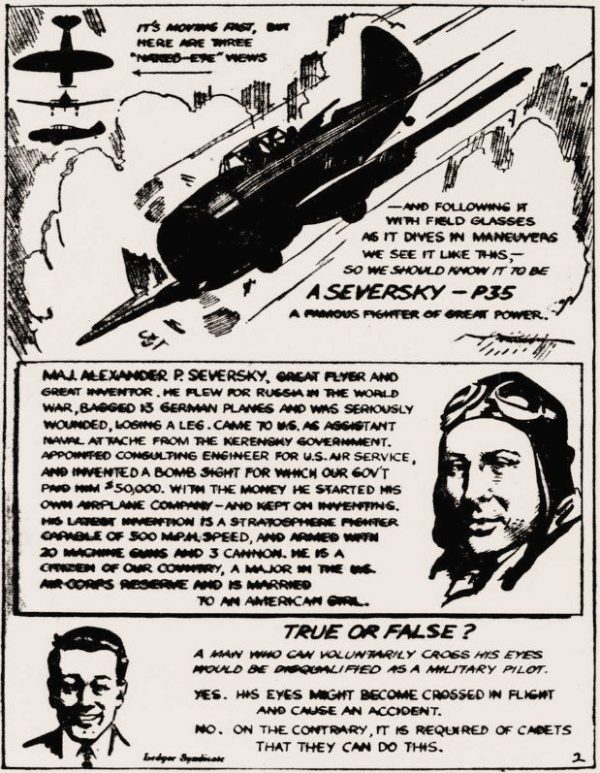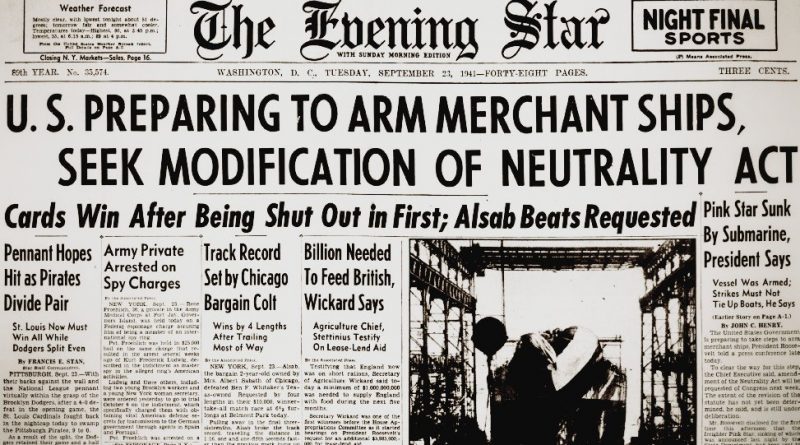World War II Chronicle: September 23, 1941
Click here for TODAY’S NEWSPAPER
Airborne search crews have located the wreckage of a twin-engine bomber on Mount Constance that appears to be the B-18 Bolo that crashed on Sept. 9. Rescue teams will be heading up the mountain to see if any of the crew members are alive. Stay tuned — or click here for the outcome (see page 34).
It won’t ruin any surprises at this point in the season to see which DiMaggio brother was the best center fielder in 1941. Joe grabbed most of the headlines with The Streak, but all three are solid on defense. Not only did Vince have a career year, he strikes out less this year than his usual league-leading performance. Dom made the All-Star Team.

Dom’s eyesight kept him out of the Army, but the Navy let him in and Chief Petty Officer Dom DiMaggio would manage and play for Navy baseball clubs stateside and in the Pacific. Stomach ulcers kept Vince from serving and he put together two All-Star seasons during the war. Ulcers hospitalized Staff Sergeant Joe DiMaggio towards the end of his service career, who had been playing ball for the Army Air Force.
Clearly Joe is the best behind the plate. Regarding the 1941 DiMaggio defensive numbers, Dom had a .967 fielding percentage, with 16 assists 15 errors, and two double plays. That gives him a range factor1Range factor = 9 x (putouts + assists) / innings… Range factor is an attempt to measure a player’s defensive contribution to a game, explaining how many outs a fielder accounts for in nine innings. of 2.87. Vince netted 11 assists 10 errors, and three double plays with a .976 fielding percentage and a range factor of 2.74. Joe committed an error yesterday that cost the Yankees a game, one of nine for the season for Joltin’ Joe. He had 16 assists, 5 double plays, a .978 fielding percentage and a 2.92 range factor.

Hall of Fame right fielder Enos Slaughter held Dom’s defensive skills in high enough regard that he would not have made his famous mad dash home that gave the Cardinals the go-ahead run during Game 7 in the 1946 World Series if DiMaggio was in the outfield on the eighth inning.
But going back to the eighth inning, the Red Sox were down 3-1 with two outs when Dom belted one out to right-center, and he knew that Slaughter was nursing a sore throwing elbow which meant he could probably stretch a sure double into a triple. Two runs scored, but Dom pulled a hamstring badly enough that he had to be taken out of the game.
In the bottom of the eighth, Slaughter occupied first base with two outs when Harry Walker drove a pitch into center. Slaughter knew replacement center fielder Leon Culberson didn’t have the arm that Dom did, so cruised right by the third-base coach telling Slaughter to hold up. Culberson wasn’t expecting Slaughter’s bold base running and and lazily sent the ball to shortstop Johnny Pesky, who now didn’t have time to nail Slaughter, sliding safely into home in what has become an iconic image for St. Louis fans.
Decades later, Slaughter and DiMaggio met up at a celebrity golf tournament where the Cardinal right fielder admitted if Dom hadn’t hurt himself, he would have stopped at third. Slaughter joined the Army Air Force during World War II, hoping to become a pilot. When they determined he was color blind, he ended up playing baseball in the Pacific Theater instead.
SPOT YOUR PLANE — Seversky P-35

This “famous fighter of great power” may have been pretty, but it was obsolete long before 1941. P-35s that survived Japanese surprise attacks on the Philippines were quickly shot down, crashed, or destroyed to prevent their capture. Not that they would have done much harm: Seversky sold some P-35s to the Japanese before the war and they weren’t impressed with the fighter.
You may have noticed the gunner in the back seat on the illustration. The P-35 was a single-seat fighter, but Seversky built several two-seat models for export. And today’s answer is no, as aviation cadets are in fact required to be able to cross their eyes.
Evening star. (Washington, D.C.), 23 September 1941. Chronicling America: Historic American Newspapers. Lib. of Congress.
https://chroniclingamerica.loc.gov/lccn/sn83045462/1941-09-23/ed-1/
